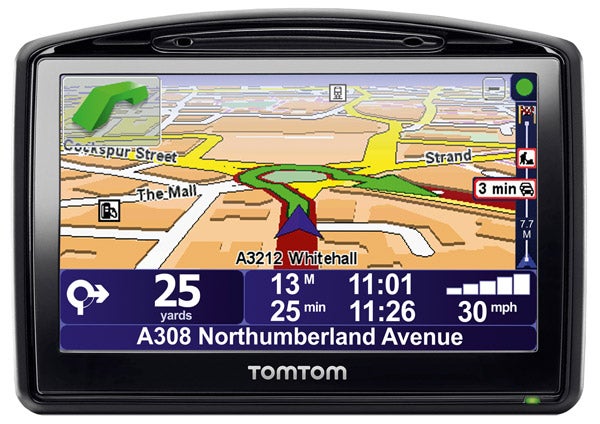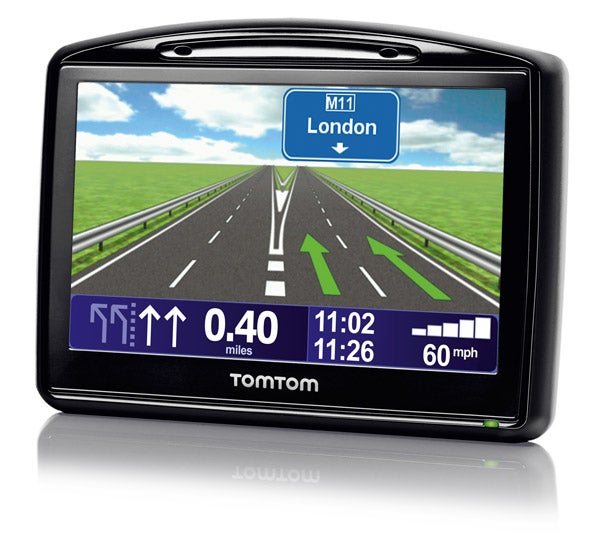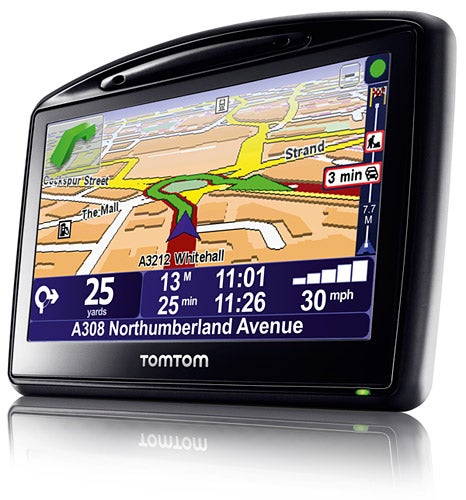TomTom Go 930 Traffic Sat-Nav Review
TomTom Go 930 Traffic Sat-Nav
TomTom has dominated the in-car sat-nav sector for some time and it's hoping to maintain that position with its latest Go 930 Traffic.

Verdict
Key Specifications
- Review Price: £399.99
It’s rare when a single company dominates a sector for any more than a few months, especially in today’s buy-it, use-it, throw-it-away, and move-on-to-the-next-big-thing culture. But that’s exactly what TomTom has managed to do with it’s Go 720 over the past nine months in the UK. I’ve reviewed many rival products in that time, and still no manufacturer has managed to match its mind-blowing combination of groundbreaking new features, solid routing, great navigation, and superb usability. And though according to recent reports the company is struggling to make ends meet, no mobile phone software has managed to come close to it either.
Now, however, the end is nigh for the 720, the 520, and the 920. They’re to be replaced by the x30 range imminently, and the top end model – the 930 Traffic – is the first to make it into our eager hands. 
The first thing you’ll notice is that very little has changed physically. Not that this is a bad thing: it still boasts that distinctive and attractive half moon shape; it still sports the same bright and clear 4.3in screen, and other attributes are just as good too. The build oozes quality, with a soft-touch plastic rear and heavily sprung latch to lock it onto the windscreen mount. And on the bottom edge, all the same ports and connections are present: the mini USB port is in the middle (used for synchronising and charging the device), and this is flanked by an SD card slot for loading music files, a 3.5mm stereo audio output and a socket for the included TMC antenna.
Fire it up and you’ll find that the basic appearance of the maps is the same too, the user interface little changed and the resolution of the screen identical. Even under the hood, few changes have been made. The Go 930 Traffic is powered by a 400MHz processor and 64MB RAM as the Go 720 was, which is fair enough: there were no problems with performance a year ago, and there are none with this newer model either.
So what exactly is different this time around? Well, it’s in the software that the big changes have been made. The first big upgrade is the addition of what TomTom has dubbed IQ Routes, and it marks a fundamental change of approach in the way the sat-nav works out how to get you from A to B. Previously, TomTom and other sat-navs calculated routes based on profiles – fastest, most efficient, shortest – and available data such as speed limits. Now, IQ Routes adds, so TomTom claims, further intelligence to that process, factoring in the average speed of traffic on roads so the sat-nav always chooses the fastest, most efficient route. It even takes into account of whether it’s a weekday or a weekend.
To test IQ Routes I entered in a trip I regularly drive from east London, all the way across town to south west London and Wimbledon Park, where my parents live. I’ve driven the route for years and I’m pretty familiar with all the fastest, most traffic free routes – a good test, in a very demanding environment for the new technology.
I was immediately impressed. Most sat-navs I review suggest a route (which also happens to be pretty slow) taking me across the Thames at Tower Bridge and through the traffic-clogged streets of south London, via Clapham Common and Clapham itself. The Go 930 Traffic was a revelation. Instead of instructing me to cross via Tower Bridge, the route stuck to the north of the river, past Westminster, only crossing at Albert Bridge once the drudgery of Battersea, and Clapham was far behind. Even my own route couldn’t match this choice. It’s hard to tell whether the 930 Traffic will maintain this level of performance over time, but none of the routes chosen during the period I had it on test appeared nonsensical or to have much better alternatives – with the 930 Traffic you can trust it even more than before to plan an efficient route for you. 
The second major addition to the mix is lane assistance. On Navigon-based sat-navs I’ve reviewed in the past, such as the Panasonic Strada CN-GP50N and Navigon 5100, this is a boon, adding useful instructions about which lane you need to be in at complicated motorway junctions. After all, if you miss your motorway junction it could be 20 minutes before you’re back on track.
Again TomTom has implemented this better than any other sat-nav I’ve seen. Not only does it provide lane instructions via the next turn icon in the info bar running along the bottom or side of the screen for major motorway junctions, but it also does so for most other multi-lane roads too. Driving around London, several non-A roads brought up lane assistance icons, just as it did at the A406/M11 and M11/M25 junctions; no other sat-nav I’ve reviewed can boast that level of detail. The only disappointment is that TomTom hasn’t seen fit to record new voice instructions to match the new graphics and mapping, so while the screen might instruct you to keep to the left two lanes out of five, the voice instructions will still say “bear left”.
Elsewhere, it’s the same top quality fare that made the x20 range so successful, with the occasional tweak here and there. Ease of use is superb, the maps update smoothly on screen, voice instructions are delivered in a timely manner and the speaker quality is quite superb. The 930 Traffic has speed cameras preinstalled, and there’s TomTom’s excellent Map Share technology, which allows you to correct errors on the map, and share others’ online, too, via TomTom’s superb Home PC synchronisation software. There’s one key improvement here too: you can now add a button to the device’s customisable shortcut menu to mark locations as you drive – this was one of the few areas I felt the TomTom Go 720 deserved criticism for when I first reviewed it last summer. 
The 930 Traffic also has Bluetooth for hands-free phone calls (it’ll even read texts out to you as they arrive) plus a Bluetooth remote control. It has an FM transmitter so you can connect the device wirelessly to your car stereo as well as sound and light sensors so the volume and screen brightness can be adjusted automatically based on the conditions in your car’s cabin. And let’s not forget that you can enter address details via speech recognition. Amazingly, as with the 720, this works brilliantly, allowing you to redirect to alternative destinations while keeping your eyes on the road and your hands on the wheel.
Last but by no means least, we come to the Go 930 Traffic’s only downside – the price. Unfortunately, the price has shot up this time around and this is now the most expensive sat-nav TomTom produces. The 930 Traffic costs a whopping £400 – £50 more than the 920T it will eventually replace. Of course you don’t have to buy the top-of-the-range model – the 730 Traffic has all the same features minus maps of Russia, Canada and the USA for £330, the plain 730 without TMC is £300 and the UK and Ireland variant less still at £280 and £250 for the Traffic and non-Traffic versions respectively. But the 730 is still significantly more expensive than the 720, for instance, and the 530 more so than the 520, which though coming to the end of their shelf life, are both still available online and can be had for around £180 and £160 respectively.
”’Verdict”’
So are the additions worth the extra cash? For now, I’d have to say – surprisingly – no. The new x30 range undoubtedly maintains the 720’s position as king of in-car sat-navs, with its improved route-finding abilities and lane assistance. But the changes, though innovative and useful, aren’t the sort of major improvements you’d want to upgrade for, and while stocks of the x20 range still exist, the older models represent a better deal.
If you want the ultimate in-car sat-nav, money is no object, and you don’t have one already, the 930 Traffic and its slightly less expensive brethren are most certainly the devices to beat. But I recommend you wait a while before buying one until the price drops by £50 or so.
Trusted Score
Score in detail
-
Value 7
-
Features 10

